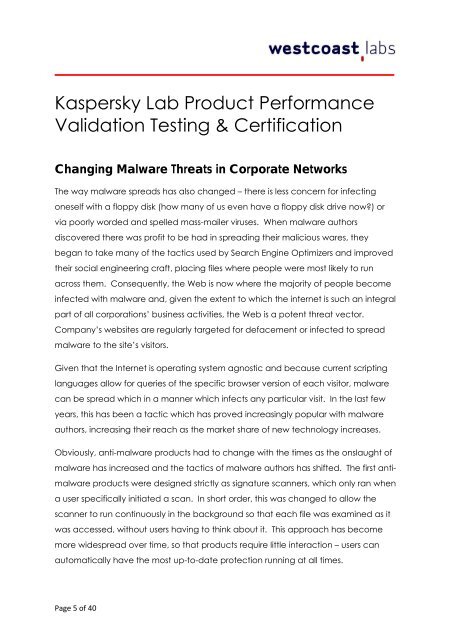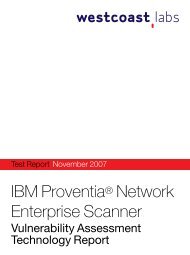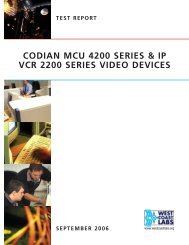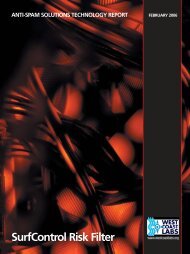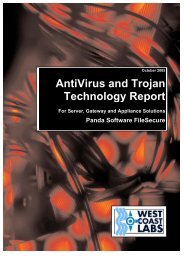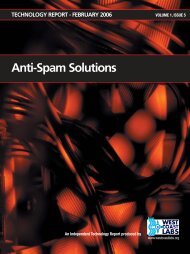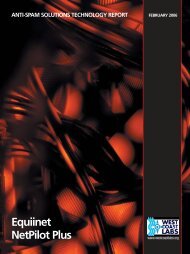Platinum Product Test Report Kaspersky Lab Anti ... - West Coast Labs
Platinum Product Test Report Kaspersky Lab Anti ... - West Coast Labs
Platinum Product Test Report Kaspersky Lab Anti ... - West Coast Labs
Create successful ePaper yourself
Turn your PDF publications into a flip-book with our unique Google optimized e-Paper software.
<strong>Kaspersky</strong> <strong>Lab</strong> <strong>Product</strong> Performance<br />
Validation <strong>Test</strong>ing & Certification<br />
Changing Malware Threats in Corporate Networks<br />
The way malware spreads has also changed – there is less concern for infecting<br />
oneself with a floppy disk (how many of us even have a floppy disk drive now) or<br />
via poorly worded and spelled mass-mailer viruses. When malware authors<br />
discovered there was profit to be had in spreading their malicious wares, they<br />
began to take many of the tactics used by Search Engine Optimizers and improved<br />
their social engineering craft, placing files where people were most likely to run<br />
across them. Consequently, the Web is now where the majority of people become<br />
infected with malware and, given the extent to which the internet is such an integral<br />
part of all corporations’ business activities, the Web is a potent threat vector.<br />
Company’s websites are regularly targeted for defacement or infected to spread<br />
malware to the site’s visitors.<br />
Given that the Internet is operating system agnostic and because current scripting<br />
languages allow for queries of the specific browser version of each visitor, malware<br />
can be spread which in a manner which infects any particular visit. In the last few<br />
years, this has been a tactic which has proved increasingly popular with malware<br />
authors, increasing their reach as the market share of new technology increases.<br />
Obviously, anti-malware products had to change with the times as the onslaught of<br />
malware has increased and the tactics of malware authors has shifted. The first antimalware<br />
products were designed strictly as signature scanners, which only ran when<br />
a user specifically initiated a scan. In short order, this was changed to allow the<br />
scanner to run continuously in the background so that each file was examined as it<br />
was accessed, without users having to think about it. This approach has become<br />
more widespread over time, so that products require little interaction – users can<br />
automatically have the most up-to-date protection running at all times.<br />
Page 5 of 40


